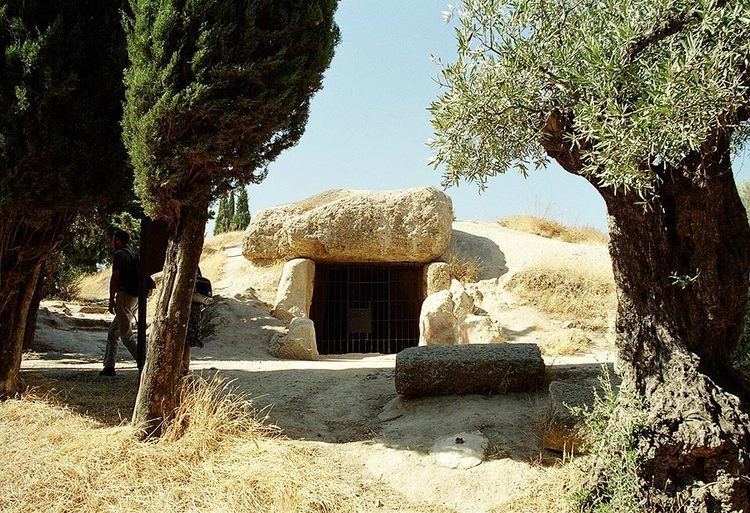Type Cultural Designated 2016 (40th session) State Party Spain Phone +34 952 71 22 07 | Criteria i, iii, iv Reference no. 1501 | |
 | ||
Region Europe and North America Hours Closed now Thursday9AM–5:30PMFriday9AM–5:30PMSaturday9AM–5:30PMSunday9AM–3:30PMMondayClosedTuesday9AM–5:30PMWednesday9AM–5:30PM Similar Tholos de El Romeral, Dolmen de Viera, Antequera Dolmens Site, Archaeological Dolmens of Antequera, Peña de los Enamorados | ||
The Dolmen of Menga (Spanish: Dolmen de Menga) is a megalithic burial mound called a tumulus, a long barrow form of dolmen, dating from the 3rd millennium BCE. It is near Antequera, Málaga, Spain.
It is one of the largest known ancient megalithic structures in Europe. It is 25 metres (82 ft) long, 5 metres (16 ft) wide and 4 metres (13 ft) high, and was built with thirty-two megaliths, the largest weighing about 180 tonnes (200 tons). After completion of the chamber (which probably served as a grave for the ruling families) and the path leading into the center, the stone structure was covered with soil and built up into the hill that can be seen today. When the grave was opened and examined in the 19th century, archaeologists found the skeletons of several hundred people inside.
The dolmen sits 70 metres (230 ft) from the Dolmen de Viera and about 4 kilometres (2.5 mi) from another subterranean structure known as Tholos de El Romeral.
In 2016, the dolmens of Menga, Viera, and El Romeral were all inscribed as a UNESCO World Heritage Site under the name "Antequera Dolmens Site".
